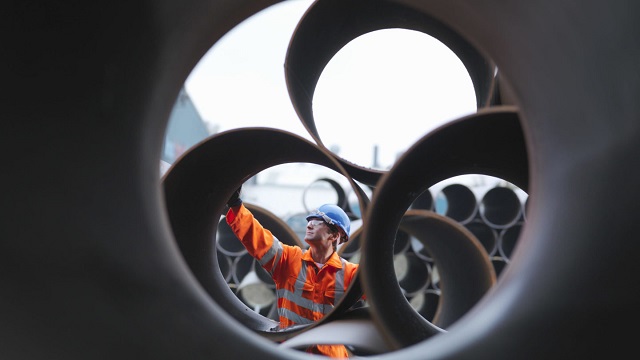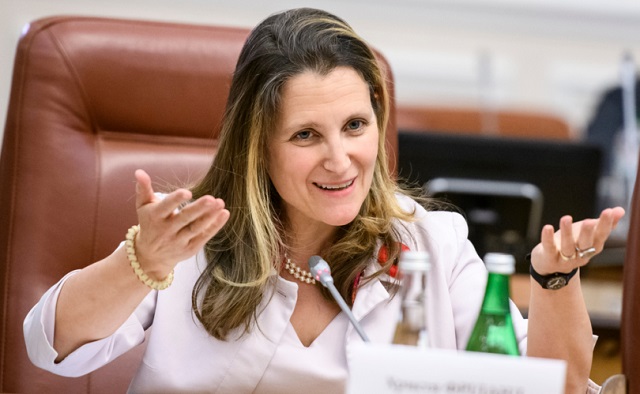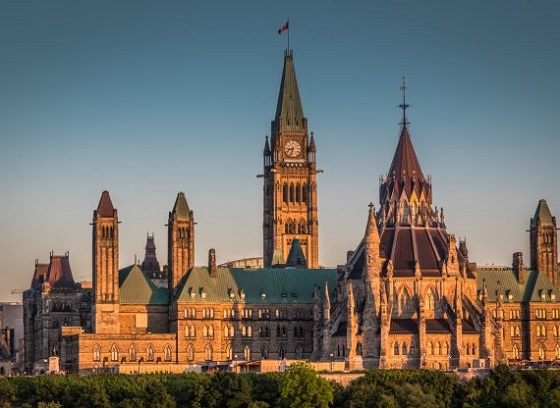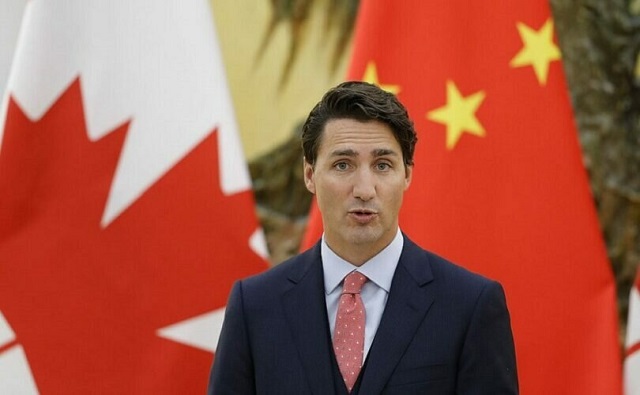Uncategorized
Cyclone Idai deaths could exceed 1,000 as need for aid grows

BEIRA, Mozambique — As flood waters began to recede in parts of Mozambique on Friday, fears rose that the death toll could soar as bodies are revealed.
The number of deaths could be beyond the 1,000 predicted by the country’s president earlier this week, said Elhadj As Sy, the secretary-general of the International Federation of Red Cross and Red Crescent Societies
In addition to worries about the number of dead, As Sy told The Associated Press that the humanitarian needs are great.
“They are nowhere near the scale and magnitude of the problem,” As Sy said. “And I fear we will be seeing more in the weeks and months ahead, and we should brace ourselves.”
Thousands of people were making a grim voyage toward the city of Beira, which although 90
Some walked along roads carved away by the raging waters a week ago. Others, hundreds of them, were ferried in an extraordinary makeshift effort by local fishermen who plucked stranded people from small islands.
Helicopters set off into the rain for another day of efforts to find people clinging to rooftops and trees.
For those who reach Beira with their few remaining possessions, life is grim. Waterborne diseases are a growing concern as water and sanitation systems were largely destroyed.
“The situation is simply horrendous, there is no other way to describe it,” As Sy said after touring transit camps for the growing number of displaced. “Three thousand people who are living in a school that has 15 classrooms and six, only six, toilets. You can imagine how much we are sitting on a water and sanitation ticking bomb.”
What moved him the most was the number of children without their parents, separated in the chaos or newly orphaned.
“Yesterday (we) did a reconnaissance and we found another (inland) lake. So we are still very early in the phase of identifying what the scope of this is, for who is affected and how many are lost,” Emma Batey,
Luckily, the area is a national park and less densely populated, she said. Still, “there were devastatingly small amounts of people.”
She estimated that another 100 people would be airlifted out on Friday: “We’re only picking up those in absolute dire need.”
No one is still clinging to roofs and trees, she said.
Pedro Matos, emergency
“If islands are big enough, we can even see smoke coming out, meaning that they’re cooking,” he said, adding that it remains “super difficult” to estimate a death toll or even the number of missing.
For residents of Beira, life staggered on. People salvaged the metal strips of roofs that had been peeled away like the skin of a fruit. Downed trees littered the streets. And yet there were flashes of life as it used to be. White wedding dresses stood pristine behind a shop window that hadn’t shattered.
Zimbabwe was also affected by the cyclone and as roads began to clear and some basic communications were set up, a fuller picture of the extent of the damage there is beginning to emerge.
The victims are diverse: a mother buried in the same grave with her child, headmasters missing together with dozens of school students, illegal gold and diamond miners swept away by raging rivers and police officers washed away with their prisoners.
The Ministry of Information said 30 pupils, two headmasters and a teacher are missing.
Zimbabwean President Emmerson Mnangagwa said Thursday that officers and prisoners were washed way.
In Mutare, fear gripped residents even though they are more than 140
Maina Chisiriirwa, a city resident, said she buried her son-in-law, who had left the city to go to Chiadzwa diamond fields to mine illegally.
“There are no jobs and all he wanted was to feed his family. He was with his colleagues. They thought it would be easier to mine since the rains would keep the guards and the police away from patrolling,” Chisiriirwa said. His colleagues survived but her son-in-law was swept away, she said.
A man who
In downtown Beira, a sidewalk is Marta Ben’s new home. The 30-year-old mother of five clutched a teary child to her hip as she described the sudden horror of the storm.
“I’ve never seen anything like this,” she said, barefoot, a cooking pot bubbling nearby. “We were not warned. Suddenly the roof flew away.”
She said she and
Now they claim a patch of sidewalk among others newly homeless. They beg passers-by for aid. They say they have received nothing from the government or aid groups, “not even bread.”
And yet she knows others have suffered more. She described seeing the ragged people who had been ferried by fishermen from communities outside the city. “They looked sad,” she said.
The survivors from inland Mozambique arrived by the boatload, some 50 at a time, mostly children, witnesses said.
“Some were wounded. Some were bleeding. Some had feet white like flour for being in the water for so long,” said Julia Castigo, who watched them arrive Friday morning.
The 24-year-old said the cyclone came as a surprise to her, her husband and two children. It blew away the roof, the door, the windows. Water filled the home.
She looked resigned. “We survived. We’re still here,” she said simply.
“The people didn’t even have clothes, nothing to cover them,” said Ignacio Dango, who watched them arrive on the beach. The 24-year-old boat builder said he saw sick, wounded and very young. “Like 5 years old.”
They came from Buzi, he said.
Residents of Beira muttered “Meu Dio!” (“My God” in Portuguese) as they went about the city and came across new scenes of destruction.
___
Farai Mutsaka reported from Mutare, Zimbabwe.
Cara Anna And Farai Mutsaka, The Associated Press
Alberta
Oil and gas in the global economy through 2050

From the Canadian Energy Centre
The world will continue to rely on oil and gas for decades to come, according to the International Energy Agency
Recent global conflicts, which have been partly responsible for a global spike in energy prices, have cast their shadow on energy markets around the world. Added to this uncertainty is the ongoing debate among policymakers and public institutions in various jurisdictions about the role of traditional forms of energy in the global economy.
One widely quoted study influencing the debate is the International Energy Agency’s (IEA) World Energy Outlook, the most recent edition of which, World Energy Outlook 2023 (or WEO 2023), was released recently (IEA 2023).
In this CEC Fact Sheet, we examine projections for oil and natural gas production, demand, and investment drawn from the World Energy Outlook 2023 Extended Dataset, using the IEA’s modelled scenario STEPS, or the Stated Policies Scenario. The Extended Dataset provides more detailed data at the global, regional, and country level than that found in the main report.
The IEA’s World Energy Outlook and the various scenarios
Every year the IEA releases its annual energy outlook. The report looks at recent energy supply and demand, and projects the investment outlook for oil and gas over the next three decades. The World Energy Outlook makes use of a scenario approach to examine future energy trends. WEO 2023 models three scenarios: the Net Zero Emissions by 2050 Scenario (NZE), the Announced Pledges Scenario (APS), and the Stated Policies Scenario (STEPS).
STEPS appears to be the most plausible scenario because it is based on the world’s current trajectory, rather than the other scenarios set out in the WEO 2023, including the APS and the NZE. According to the IEA:
The Stated Policies Scenario is based on current policy settings and also considers the implications of industrial policies that support clean energy supply chains as well as measures related to energy and climate. (2023, p. 79; emphasis by author)
and
STEPS looks in detail at what [governments] are actually doing to reach their targets and objectives across the energy economy. Outcomes in the STEPS reflect a detailed sector-by-sector review of the policies and measures that are actually in place or that have been announced; aspirational energy or climate targets are not automatically assumed to be met. (2023, p. 92)
Key results
The key results of STEPS, drawn from the IEA’s Extended Dataset, indicate that the oil and gas industry is not going into decline over the next decade—neither worldwide generally, nor in Canada specifically. In fact, the demand for oil and gas in emerging and developing economies under STEPS will remain robust through 2050.
Oil and natural gas production projections under STEPS
World oil production is projected to increase from 94.8 million barrels per day (mb/d) in 2022 to 97.2 mb/d in 2035, before falling slightly to 94.5 mb/d in 2050 (see Figure 1).

Source: IEA (2023b)
Canadian overall crude oil production is projected to increase from 5.8 mb/d in 2022 to 6.5 mb/d in 2035, before falling to 5.6 mb/d in 2050 (see Figure 2).

Source: IEA (2023b)
Canadian oil sands production is expected to increase from 3.6 mb/d in 2022 to 3.8 mb/d in 2035, and maintain the same production level till 2050 (see Figure 3).

Source: IEA (2023b)
World natural gas production is anticipated to increase from 4,138 billion cubic metres (bcm) in 2022 to 4,173 bcm in 2050 (see Figure 4).

Source: IEA (2023b)
Canadian natural gas production is projected to decrease from 204 bcm in 2022 to 194 bcm in 2050 (see Figure 5).

Source: IEA (2023b)
Oil demand under STEPS
World demand for oil is projected to increase from 96.5 mb/d in 2022 to 97.4 mb/d by 2050 (see Tables 1A and 1B). Demand in Africa for oil is expected to increase from 4.0 mb/d in 2022 to 7.7 mb/d in 2050. Demand for oil in the Asia-Pacific is projected to increase from 32.9 mb/d in 2022 to 35.1 mb/d in 2050. Demand for oil from emerging and developing economies is anticipated to increase from 47.9 mb/d in 2022 to 59.3 mb/d in 2050.

Source: IEA (2023b)

Source: IEA (2023b)
Natural gas demand under STEPS
World demand for natural gas is expected to increase from 4,159 billion cubic metres (bcm) in 2022 to 4,179 bcm in 2050 (see Figures 6 and 7). Demand in Africa for natural gas is projected to increase from 170 bcm in 2020 to 277 bcm in 2050. Demand in the Asia-Pacific for natural gas is anticipated to increase from 900 bcm in 2020 to 1,119 bcm in 2050.

Source: IEA (2023b)

Source: IEA (2023b)
Cumulative oil and gas investment expected to be over $21 trillion
Taking into account projected global demand, between 2023 and 2050 the cumulative global oil and gas investment (upstream, midstream, and downstream) under STEPS is expected to reach nearly U.S.$21.1 trillion (in $2022). Global oil investment alone is expected to be over U.S.$13.1 trillion and natural gas investment is predicted to be over $8.0 trillion (see Figure 8).
Between 2023 and 2050, total oil and gas investment in North America (Canada, the U.S., and Mexico) is expected to be nearly U.S.$5.6 trillion, split between oil at over $3.8 trillion and gas at nearly $1.8 trillion (see Figure 8). Oil and gas investment in the Asia Pacific, over the same period, is estimated at nearly $3.3 trillion, split between oil at over $1.4 trillion and gas at over $1.9 trillion.

Source: IEA (2023b)
Conclusion
The sector-by-sector measures that governments worldwide have put in place and the specific policy initiatives that support clean energy policy, i.e., the Stated Policies Scenario (STEPS), both show oil and gas continuing to play a major role in the global economy through 2050. Key data points on production and demand drawn from the IEA’s WEO 2023 Extended Dataset confirm this trend.
Positioning Canada as a secure and reliable oil and gas supplier can and must be part of the medium- to long-term solution to meeting the oil and gas demands of the U.S., Europe, Asia and other regions as part of a concerted move supporting energy security.
The need for stable energy, which is something that oil and natural gas provide, is critical to a global economy whose population is set to grow by another 2 billion people by 2050. Along with the increasing population comes rising incomes, and with them comes a heightened demand for oil and natural gas, particularly in many emerging and developing economies in Africa, the Asia-Pacific, and Latin America, where countries are seeing urbanization and industrialization grow rapidly.
References (as of February 11, 2024)
International Energy Agency (IEA), 2023(a), World Energy Outlook 2023 <http://tinyurl.com/4nv9xyfj>; International Energy Agency (IEA), 2023(b), World Energy Outlook 2023 Extended Dataset <http://tinyurl.com/3222553b>.
Uncategorized
Chrystia Freeland refuses to answer how much Trudeau government has collected via carbon tax

From LifeSiteNews
Deputy Prime Minister and Finance Minister Chrystia Freeland continues to claim that the revenue from the carbon tax ‘goes back to Canadians’ despite data showing otherwise.
Canadian Deputy Prime Minister and Finance Minister Chrystia Freeland has refused to reveal how much Liberals have collected via the unpopular carbon tax, which is set to go up again on April 1.
During a March 21 session in the House of Commons, Conservative Member of Parliament (MP) Marty Morantz questioned Freeland regarding how much the Liberal government has taken in through the carbon tax.
“How much has your government collected in carbon taxes?” Morantz asked.
Freeland responded by dodging the question, stating, “[This is] also an opportunity for me to point out that Manitoba families will be getting $1,200 this year.”
“Again, minister, if I could just have the number [of] how much you’ve collected in carbon taxes,” Morantz pressed.
Freeland again refused to answer, instead claiming that the “key point” is that the “price on pollution” is “revenue neutral.”
As Morantz persisted in his question, Freeland alleged that the revenue from the carbon tax is “all money that goes back to Canadians.”
However, this statement has been proven untrue as the Parliamentary Budget Officer recently revealed that the government rebates are insufficient to cover the rising costs of fuel under Trudeau’s carbon tax, causing many to wonder where their money is actually going.
According to records published in December, the carbon tax cost Canadians nearly $200 million in paperwork since Prime Minister Justin Trudeau introduced the fuel charge in 2019.
Trudeau’s carbon tax, framed as a way to reduce carbon emissions, has cost Canadian households hundreds of dollars annually despite rebates when factoring in the indirect costs associated with the measure.
The costs are only expected to rise, as a recent report revealed that a carbon tax of more than $350 per tonne is needed to reach Trudeau’s net-zero goals by 2050.
Currently, Canadians living in provinces under the federal carbon pricing scheme pay $65 per tonne, but the Trudeau government has a goal of $170 per tonne by 2030.
Additionally, Trudeau has refused to pause the carbon tax hike scheduled for April 1, despite seven out of ten provincial premiers and 70 percent of Canadians pleading with him to halt his plan.
Meanwhile, Trudeau and his cabinet continue to attend lavish retreats, with a recent Liberal retreat costing taxpayers nearly $500,000.
During a media interview following the nearly $500,000 retreat, Trudeau told Canadians struggling with the high cost of living that times are also difficult for politicians.
“Yeah, people are facing tough times, and yes, everyone is finding it difficult right now. And as leaders, MPs, parliamentarians of all types, part of our job is to be there to take it, to support it as Canadians are worried and anxious, and put out those solutions,” he said.
“So yeah, it’s not an easy time to be a politician,” Trudeau lamented.
-

 Brownstone Institute1 day ago
Brownstone Institute1 day agoIs the Overton Window Real, Imagined, or Constructed?
-

 Frontier Centre for Public Policy1 day ago
Frontier Centre for Public Policy1 day agoThe tale of two teachers
-

 COVID-192 days ago
COVID-192 days agoJapanese study finds ‘significant increases’ in cancer deaths after third mRNA COVID doses
-

 Brownstone Institute2 days ago
Brownstone Institute2 days agoPfizer Lied to Us Again
-

 Brownstone Institute2 days ago
Brownstone Institute2 days agoDid Lockdowns Set a Global Revolt in Motion?
-

 Alberta14 hours ago
Alberta14 hours agoAlberta moves to protect Edmonton park from Trudeau government’s ‘diversity’ plan
-

 Alberta4 hours ago
Alberta4 hours agoProvince to stop municipalities overcharging on utility bills
-

 Energy3 hours ago
Energy3 hours agoAnti-LNG activists have decided that they now actually care for LNG investors after years of calling to divest









